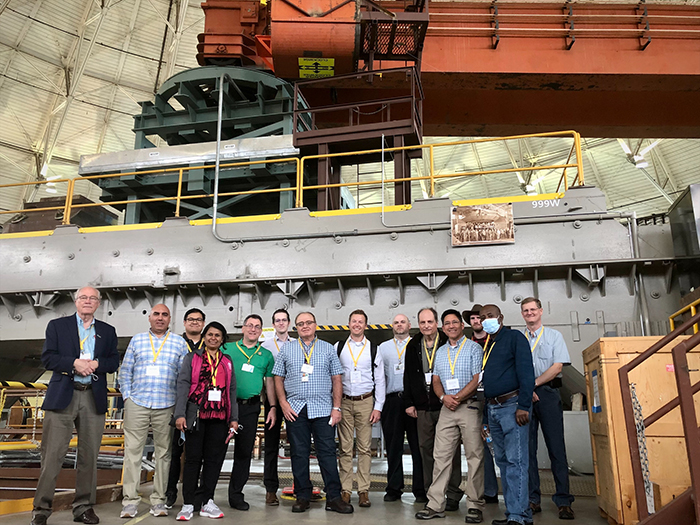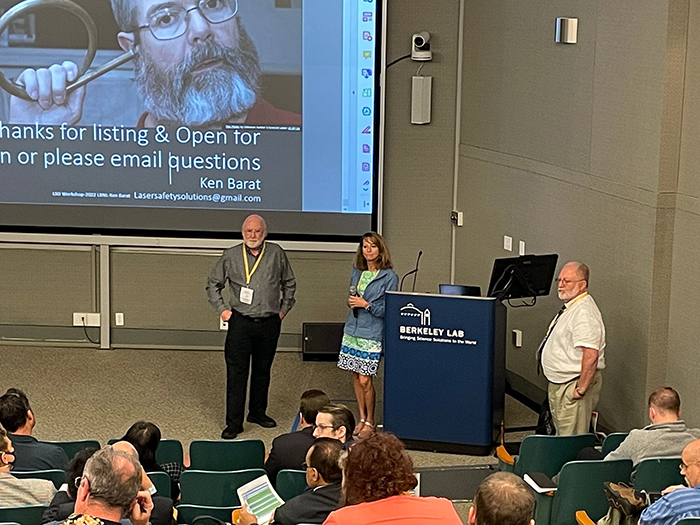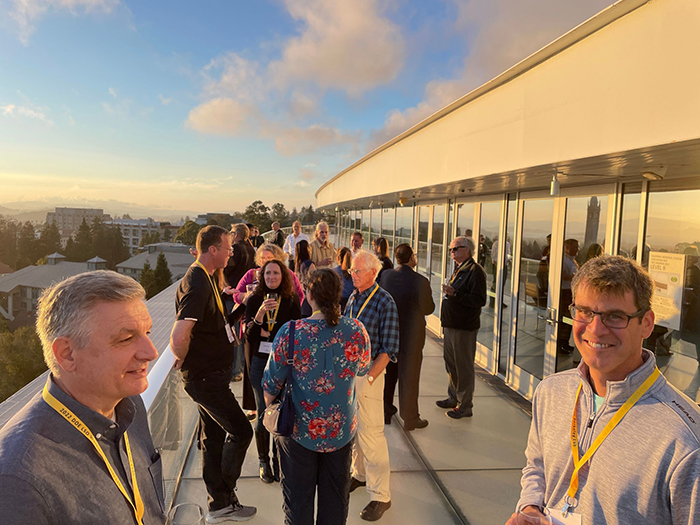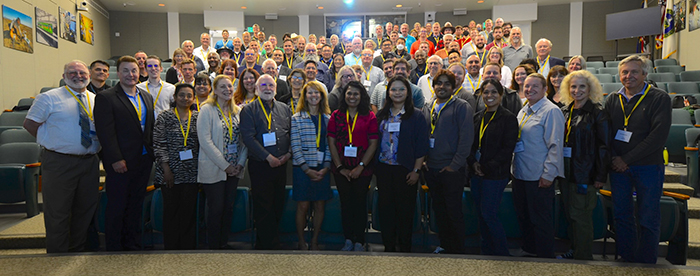New Generation of Laser Safety Officers Convene for DOE Workshop
November 16, 2022
 A group of Laser Safety Officer Workshop attendees tour the Advanced Light Source user facility at Lawrence Berkeley National Laboratory, this year’s workshop host. Credit: Alex Lindquist, National Renewable Energy Laboratory
A group of Laser Safety Officer Workshop attendees tour the Advanced Light Source user facility at Lawrence Berkeley National Laboratory, this year’s workshop host. Credit: Alex Lindquist, National Renewable Energy Laboratory A recent Department of Energy (DOE)-organized laser safety workshop showcased how national laboratory safety regulations such as those developed at LLNL and NIF are helping to raise the standards at academic-based research facilities.
The 14th DOE Laser Safety Officer Workshop was held Sept. 13-15 at Lawrence Berkeley National Laboratory (LBNL), with opening and closing remarks delivered by LLNL Laser Safety Officer Jamie King, who served as the workshop director.
This was the first time in four years the biennial workshop was held in person due to COVID-19 restrictions. About 120 people attended, the largest gathering of its kind since before the pandemic.
King noted many in the audience were attending the workshop for the first time. And most represented academic facilities, which bodes well for LLNL and other national laboratory laser research facilities that depend on the academic pipeline to supply future laser researchers.
“It shows we are instilling our safety standards upon the university laser safety officers,” King said. “This is bringing us workers who are trained to our standards.”
The workshop, which first convened at LLNL in 2005, is aimed at people in charge of laser safety in research or academic settings who want to update and expand their knowledge. The presentations included topics such as new approaches for safely aligning laser beams, the future of laser safety eyewear, and safety measures used by the workshop host’s petawatt-class Berkeley Lab Laser Accelerator (BELLA).
 Former NIF laser safety officer and current industry consultant Ken Barat takes questions after his presentation at the DOE Laser Safety Officer Workshop. Credit: Greta Toncheva, LBNL
Former NIF laser safety officer and current industry consultant Ken Barat takes questions after his presentation at the DOE Laser Safety Officer Workshop. Credit: Greta Toncheva, LBNL In his presentation, laser industry consultant Ken Barat, who recruited King to become his successor as NIF’s laser safety officer, suggested methods for integrating a very mainstream technology—a smart phone—into laser safety systems and protocols, such as accident reporting and instructions, alert notifications, safety locks, and training.
King presented a report he wrote with LLNL Deputy LSO Hayden Johnson on the lessons learned from laser incidents at DOE labs since 2018. Johnson and NIF work planner Sandeep Bansal were among the first-time workshop attendees.
“As a work planner for LLNL,” Bansal said, “having the opportunity to meet with others in the field was beneficial. I was able to learn different safety measures that we can implement here at LLNL.”
Johnson said he was most impressed by a presentation by Dr. Austin Roorda of UC Berkeley’s Herbert Wertheim School of Optometry & Vision Science on the recovery of a damaged human retina following a laser exposure.
The talk, “High resolution, longitudinal structure/function analysis of laser eye damage,” detailed the results of a 265-day study of an individual who incurred an eye injury from a brief accidental exposure to a 1-watt, 852-nanometer continuous-wave laser beam. The study showed the initial retinal exam after an injury does not always determine long-term visual acuity.
Johnson noted that Roorda built a new-generation adaptive optics scanning laser ophthalmoscope to image the reflectivity of the retinal cone cells at and near the fovea, the point inside the back of the eye that provides the sharpest vision.
“He used this device to track the recovery of the reflectivity of these cone cells and was able to show the reflectivity of the cells can recuperate,” Johnson said. “Dr. Roorda was clear that this recovery of reflectivity does not imply that the cells regenerate, but that the damaged retina can adapt to improve visual acuity.”
 Workshop attendees enjoyed dinner in the conference center on the top level of UC Berkeley’s Memorial Stadium. Credit: Greta Toncheva, LBNL
Workshop attendees enjoyed dinner in the conference center on the top level of UC Berkeley’s Memorial Stadium. Credit: Greta Toncheva, LBNL The workshop also hosted the annual meeting of DOE’s Laser Safety Task Team (DOE-EFCOG), and the Board of Laser Safety offered its Certified Laser Safety Officer (CLSO) examination.
“As a new member of the laser safety community,” Johnson said, “the opportunity to meet and interact with veterans of the field was invaluable. I met a lot of very knowledgeable professionals who shared their insight and experience. I really enjoyed discussing the issues that we all encountered, the challenges and complexities of our work environments, and unique solutions implemented to address them.”
 Attendees of the Laser Safety Officer Workshop gather for a group photo. Credit: John Christensen, LBNL
Attendees of the Laser Safety Officer Workshop gather for a group photo. Credit: John Christensen, LBNL —Benny Evangelista
Follow us on Twitter: @lasers_llnl



